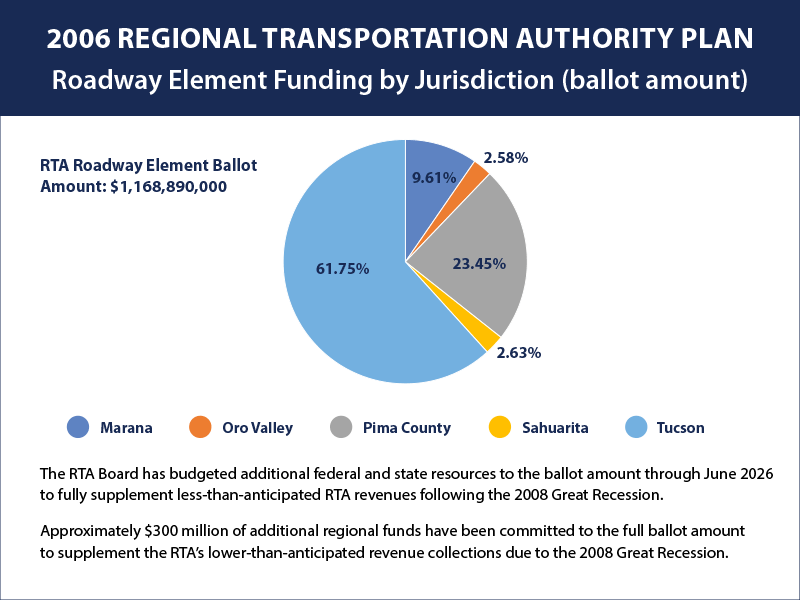The primary funding source for Regional Transportation Authority plan projects is from the RTA’s voter-approved half-cent (excise) sales tax.
The RTA tax is levied on taxable goods and services throughout Pima County to pay for the projects in the 20-year regional transportation plan. Both the plan and tax were approved by Pima County voters in 2006.
RTA funding, though, is not the only source of taxpayer money that brings a project to fruition. The local jurisdiction building the project also may be responsible for a portion of the project costs. Other sources of funds may be impact fees, grants or other regionally dedicated dollars that are derived from federal and state gas taxes.
For a project-by-project breakdown of RTA and non-RTA funds, see page 4 of the RTA’s Our Mobility brochure.
What’s taxable?
Generally, the excise (sales) tax is levied on retail sales (other than pharmacy and grocery items), contracting, utilities, restraint and bar sales, real estate rental and even internet sales.
What happens if a project goes over budget?
The jurisdiction sponsoring the project (a Marana road improvement is managed by the Town of Marana, for example) is responsible for costs beyond the ballot amounts. It is also responsible for the maintenance of RTA projects after they are constructed.
What happens if there aren’t enough RTA funds to cover the plan costs?
In light of the 2008 Great Recession and its effect on revenue collections, the RTA Board acted early to ensure that regional funding sources would be used to make up for less-than-anticipated RTA revenues up to the ballot amount. This means that any other state or federal funds available to the region will be designated first for RTA projects.
This decision ensures the voters’ wishes will be fulfilled according to the plan they overwhelmingly approved.
How are the funds distributed to the local jurisdictions?
The graph above shows the proportion of funding in the 20-year plan that is allocated for each jurisdiction, based on their respective projects as overwhelmingly endorsed by the jurisdictions and approved by the public. The City of Tucson has the largest population in the metro area, and receives the largest proportion of the funding in the plan.
Two fact sheets help explain the funding in further detail:
